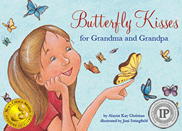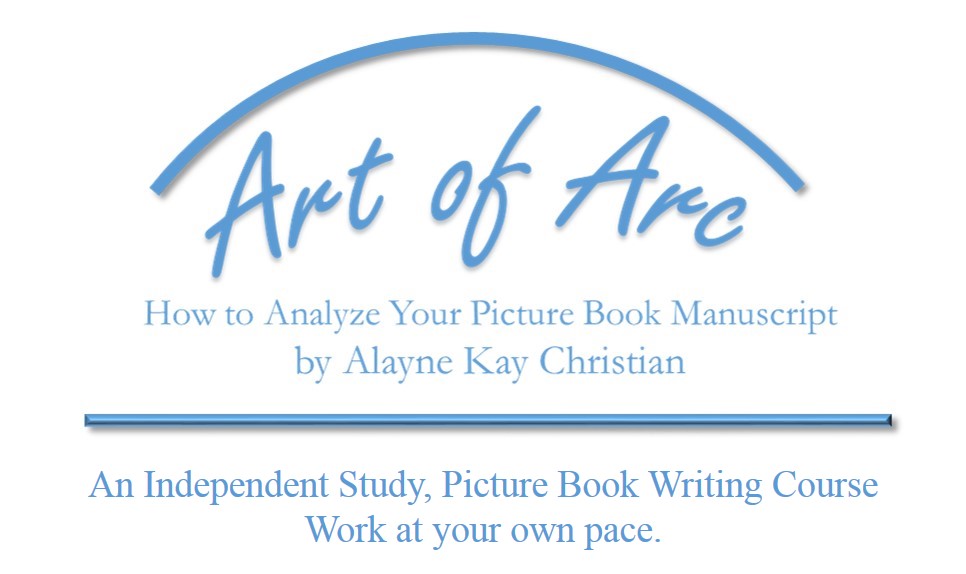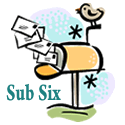This “Wisdom” round’s question isn’t exactly a question. I asked the team to tell us about their travels down the long and winding road to publication. You can learn more about why I chose to cover this topic in Publication Doesn’t Happen Overnight Part 1 of 3 here. And you can read part 2 of 3 here. You can read more about the “Wisdom” team members and their books here.

Before I move on, I’d like to do a little horn tooting and also offer a BIG CONGRATULATIONS to Janie Reinart and Morgan Taylor. Their book WHEN WATER MAKES MUD: A STORY REFUGEE CHILDREN has been rated the #1 new release in Children’s Africa Books on Amazon. So, where does the horn tooting come in? This is one of the last books that I edited, did art direction, designed, and published during my work with Blue Whale Press. Not a bad way to finish!
Now for some . . .
“MY WRITING GREW STRONGER DURING THOSE TEN YEARS, AND MY KNOWLEDGE OF THE INDUSTRY INCREASED EXPONENTIALLY.”
by Laura Gehl
I wrote my first picture book, One Big Pair of Underwear, when my oldest son (now almost 17!) was a baby. The book was published almost exactly a decade later. In between, I wrote a lot of other books, some of which went on to be published. Most did not. My writing grew stronger during those ten years, and my knowledge of the industry increased exponentially. Like most people, I made some embarrassing mistakes before I knew what I was doing!
Now that I have published close to thirty books and have a fabulous agent (I did not have an agent when I sold my first book), I still get rejections. And I still have manuscripts that never end up selling—even books that my agent and my critique partners love. I can’t honestly say that rejections feel much different now either. While I KNOW that each rejection is just about a certain book not being the right fit for a certain editor at a certain time, that doesn’t mean each rejection doesn’t hurt. I once received a rejection for a manuscript that had already been acquired by a different publisher, and it STILL stung. The waiting hasn’t disappeared either. But my critique partners, my agent, and the wonderful teachers/parents/kids who take the time to tell me how much they love my books all help weather the inevitable rejections and the just-as-inevitable waiting that are part of this business!
KEEP DOING THE WORK
by Dawn Babb Prochovnic
My journey certainly has been and remains, long and winding. I attended my first writing conference in the summer of 2004. I knew nothing about the publishing industry, and I came to learn. The guest editor was Arthur A. Levine, of Harry Potter fame. He was kind and generous with his time, feedback, and encouragement. After the conference, I formed a critique group and joined SCBWI. With the support of these groups, I worked diligently on one of the stories I’d workshopped at the conference, and when I felt it was ready, I submitted my first manuscript to Arthur A. Levine Books, (his imprint at Scholastic, at the time.)
Arthur was again kind and encouraging, and I will always treasure the personal letter he sent back to me, gently declining my story. Over the next several years, I continued to do the work of a writer, inventing new stories, revising, and asking for critiques over and over again. As I developed an inventory of submission-ready manuscripts, I studied publishing houses and began the task of submitting. I accumulated several large file boxes filled with manuscripts in various stages of revision and correspondence from editors across the country (this was before submitting electronically was a thing.) Over time, the editorial correspondence I received shifted from form letters to personalized notes with suggestions for revision and/or ideas for other publishers that might be a better fit for my work.
One dark and stormy night in October 2007, I took my kids to a book event in our area to meet Bart King, the author of my daughter’s then-favorite book. At the event, I visited with another exhibiting author, David Michael Slater, whose books with an educational hook struck me as being similar in nature to my stories that incorporated American Sign Language. I told him about my work, and he agreed that it sounded like a strong fit for his publisher, ABDO, and he was kind enough to put me in touch with his editor. ABDO was indeed a good fit for my ready work at the time, and I published 16 books with that editor, from 2009-2012. It was a great experience.
Then I had a dry spell. A long dry spell that didn’t break until 2015 when two author friends in my local area, Elizabeth Rusch and Amber J Keyser, thought of me for an anthology they were working on called Oregon Reads Aloud. Liz reached out to invite me to participate, and I shared a freshly revised version of a story that had received several encouraging “personalized rejections” (so I knew that it was “ready,” it just needed to find the right home.) The story was accepted for the anthology, my dry spell had lifted, and my confidence was restored.
Through the process of participating in a wide variety of marketing events for Oregon Reads Aloud, I met the publishing director and marketing manager for West Margin Press (then Graphic Arts Books.) I’ve since published three picture books with the marvelous team at West Margin Press, including my book that just released in April, Lucy’s Blooms. It is my sincere hope I’ll get to work with them on another book in the future, but alas, they’ve passed on my last three submissions. Not to worry. Those stories will find a home, they just need to find the right home.
With 20 picture books and nearly as many years of experience, there are parts of me that still feel a bit like a newbie in this business. Maybe that’s because I’ve not yet been able to secure an agent (I will keep trying.) Maybe it’s because the publishing industry is hard to break into (over and over again.) Maybe it’s because each book takes a different route to publication, so the path is in fact a bit new each time.
With that said, here are my tips and takeaways: Keep doing the work. Read. Write. Revise. Seek feedback. Revise again. Build a body of ready work. Attend book events. Support others in their work. Make friends. Seek out and accept opportunities that align with your interests. Strive to better understand the market. Submit your work, as it becomes ready. Repeat.
TRENDS COME AND GO
by Michelle Nott
I was first inspired to write children’ stories while living in Belgium. My little girls’ bookshelf was mainly stocked with stories written in French. They were brilliant books, but we had decided to raise our children bilingually. And so I dusted off my Creative Writing degree and got writing … and thinking about turning these bedtime stories into actual books. Luckily, I found SCBWI Belgium (now SCBWI Benelux) to guide me. A couple months into my first critique group, a friend said she thought her editor would like one of my manuscripts. I queried her and after a round of revisions, she offered to publish my first early reader book. But it would take four years to have it in my hands. Once that book came out, she acquired my second early reader that took another four years to see the light of day. In the meantime, I queried agents with picture book and middle grade manuscripts. One of my first picture book stories received many kind rejections, mainly “it’s lovely, but too quiet.” At the time, most agents and editors were asking for action-packed plot-driven stories. Mine was not. But it’s important to remember that trends come and go, and to write the story you are to write. Finally, I sent a middle grade manuscript to an agent who replied that she liked my writing, but asked if I also wrote picture books. I sent her that quiet manuscript,… and she loved it! And then an editor and an illustrator at Enchanted Lion Books loved it. And now I’m thrilled that this book, Teddy Let’s Go!, written when my oldest daughter was in Kindergarten, will be published in time for me to hand it to her on her way to university!
PERSISTENCE CAN CERTAINLY GET YOU TO WHERE YOU WANT TO BE
by Rosie Pova
My journey to publication was definitely long and full of heartbreaks along the way. Given the fact that English is not my native language, and I had no clue how publishing worked, no wonder it took me 13 years to get my first yes from a traditional publisher. I had so much to learn, so much to catch up on as an immigrant, and so much to experience before I found my footing.
But when that yes came, two more came with it as well, so I received three publishing contracts all at once! That was certainly an exciting victory!
Up to that point, I had been submitting to both agents and publishers. But even though I did get an agent before, the book she signed me with didn’t sell.
Fast-forward to today, I have five traditionally published books (four out, one upcoming), and my newly released one, Sunday Rain, was recently featured in The New York Times which is an absolute dream come true!
Overnight success in publishing is rare. But persistence can certainly get you to where you want to be.
And yes, I still get rejections. All the time. And that’s perfectly normal. In fact, those rejections are necessary, because that’s how our work finds the exact right home it’s meant for.
“I HAVE TO LOVE WHAT I’M WORKING ON, I HAVE TO ENJOY MY WRITING RITUALS, AND I HAVE TO RELY ON FRIENDS WHO ARE ON THE SAME JOURNEY.”
by Marcie Flinchum Atkins
It took me many years of writing very diligently to have my first book published. I first published work-for-hire nonfiction for the educational market. My first trade picture book WAIT, REST, PAUSE: DORMANCY IN NATURE was picked up in a call for submissions from Millbrook Press. I already had something to submit that had been getting good feedback, but ultimately kept getting rejected.
I write everyday (I score high on “discipline” in Clifton Strength’s Finders) because it helps me stay connected to my work. If I don’t write, I often feel like things are “off.” I have several projects in circulation—often in different genres and for different age groups. When one project isn’t going quite right, I can work on another project. I always have something percolating or waiting to be worked on. To stay positive, I keep a spot in my bullet journal for celebrations. They often don’t include “book deal.” But they do include things like: finished middle grade novel revision, finished fast draft of chapter book, received positive feedback from editor, participated in panel at XX conference. These celebrations remind me that the journey is important too. When it feels like a long wait for a book deal, these small victories remind me that I’m making progress.
I definitely get rejections—a lot of them. I try to frame rejections in different ways. Sometimes I get rejected because the publisher has already bought something similar. Other times I get rejected because the publisher just didn’t connect with it. If I get feedback from various places that sounds similar or points to the same thing, then I know it’s time to pull back and take another look. In those cases, rejections can make me a better writer. But they definitely don’t make the writing life easy. That’s why, for me, I have to enjoy the journey I’m on. I have to love what I’m working on, I have to enjoy my writing rituals, and I have to rely on friends who are on the same journey.
TO READ PART 1 OF “LONG AND WINDING ROAD TO PUBLICATION” click here and TO READ PART 2 click here. TO READ THE TEAM MEMBERS’ ANSWERS TO “MY MOST IMPORTANT LESSON LEARNED” click here for Part One and here for Part Two. TO READ MORE ABOUT THE KID-LIT WRITING WISDOM TEAM AND THEIR BOOKS click here.
A LITTLE BONUS FEATURE–THE BOOK TRAILER FOR WHEN WATER MAKES MUD













 A LITTLE OF THIS
A LITTLE OF THIS This month, I’m honored to share that Colleen Story is featuring my guest post
This month, I’m honored to share that Colleen Story is featuring my guest post 

















